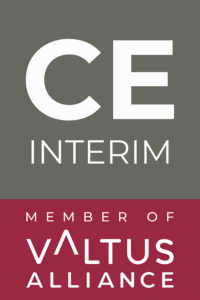Expanding into a new market can unlock exponential growth—but it can also backfire if the underlying risks are underestimated. For every successful global expansion, four others fail to meet expectations. In fact, 73% of executives say entering a new market is more difficult than expected, citing factors like culture, compliance, and talent.
Whether you’re a PE executive targeting a fast-growing Middle Eastern opportunity or a CEO steering a CEE market launch, understanding the real barriers to new market entry is essential.
In this article, we unpack both internal and external hurdles you may face, especially in complex but opportunity-rich regions like the Middle East and Central & Eastern Europe (CEE).
Why New Market Entries Often Fail: Lessons for Global Leaders
Market entry failure is not random. It usually comes down to three things:
- Underestimating market complexity
- Overestimating internal readiness
- Failing to adapt fast enough
Take Starbucks’ exit from Israel as a case in point—they underestimated local consumer habits and over-relied on a U.S.-centric playbook. Similarly, internal misalignment can cause strategy pivots, confusion, or even sabotage a project before it begins.
The takeaway? Barriers to new market entry are not always external. Often, the biggest risks start from within.
Internal Barriers to New Market Entry
I. Leadership Misalignment and Vision Gaps
A market entry strategy without leadership consensus is a recipe for chaos. When C-level and departmental goals diverge, execution suffers. In PE-backed companies, this misalignment is often worsened by pressure to scale fast.
How to mitigate it:
- Establish a clear, shared roadmap.
- Use interim expansion leaders to align cross-functional teams and maintain focus.
II. Limited Local Talent and Expertise
You can’t win in a new market with an inexperienced team. Local knowledge is irreplaceable. Yet many firms rely too heavily on headquarters staff to lead market expansion.
Real-world example: A fintech entering CEE failed to recruit local compliance officers in time, delaying their licensing process by six months.
Solution: Hire interim managers with on-the-ground experience to bridge your talent gap during the critical early phase.
III. Poor Product-Market Fit and Cultural Missteps
What works in London may flop in Dubai. Language, pricing, UX, customer expectations—everything must be localized.
Stat to consider: 74% of U.S. business leaders report culture and language as top concerns when expanding abroad.
Example: Uber had to add cash payments in India and the Middle East after initially launching with card-only payments.
IV. Inadequate Planning and Resource Allocation
Global expansion costs millions. Without dedicated resources, market entry initiatives are doomed.
Industry insight: It typically costs $2M+ to establish presence in a new market—from legal setup to team hiring.
Mitigation strategy: Deploy interim CFOs or project leads to map realistic budgets and oversee execution.
External Barriers to New Market Entry
I. Complex Regulatory and Legal Hurdles
Every region has its red tape. In the Middle East, free zone laws differ from mainland regulations. In CEE, EU integration doesn’t mean zero bureaucracy.
Example: GDPR compliance mistakes in the EU can lead to fines up to 4% of global revenue.
Solution: Leverage local legal advisors and experienced interim integration managers to navigate post-acquisition compliance.
II. Market Saturation and Competitive Intensity
Established competitors enjoy home-field advantage. From customer trust to government ties, new entrants often struggle to gain visibility.
Stat: 78% of global expansion failures cite local competition as a key factor.
Approach: Conduct deep competitor audits and consider joint ventures to gain rapid market access.
III. Geopolitical and Economic Instability
From sanctions to regime changes, political uncertainty can derail even the best-laid expansion plans.
Middle East: Fluctuating oil prices and diplomatic tensions add unpredictability.
CEE: Policy shifts and regional conflict (e.g., Ukraine crisis) create macro-level risk.
Proactive steps: Have contingency reserves, insurance, and local advisors who can provide early warnings.
IV. Cultural and Customer Behaviour Differences
Cultural friction is a silent killer. In the Middle East, relationship-building is paramount. In CEE, negotiation styles and consumer trust vary greatly.
Insight: 75% of consumers prefer buying from a brand that communicates in their native language.
Fix: Bring in bicultural interim executives to serve as cultural bridges.
Strategies to Overcome Market Entry Barriers (and How Interim Expertise Helps)
1. Deep Market Diagnostics
- Conduct feasibility studies, stakeholder mapping, and customer segmentation before launch.
- Tip: Use CE Interim’s interim consultants to lead market diagnostics in unfamiliar territories.
2. Build a Local Ecosystem
- Engage legal, tax, and logistics partners.
- Consider interim market entry managers with existing networks to fast-track introductions.
3. Pilot, Learn, Then Scale
- Start small. Launch in one region or with a limited product line.
- Interim managers can drive early wins and then hand over to long-term teams.
4. Use Interim Executives to Fill Strategic Gaps
- Roles: Post-Merger Integration, Expansion Lead, Local CEO, Commercial Director.
- These temporary hires bring focus, speed, and expertise without long-term overhead.
5. Embrace Agility and Risk Planning
- Create contingency plans for regulatory, financial, and reputational risks.
- Assign an interim risk officer to continuously monitor and adapt.
Summary Table
| Barrier | Mitigation Strategy |
|---|---|
| Leadership misalignment | Interim CEO or Expansion Lead to unify vision |
| Regulatory complexity | Legal partners + interim integration specialists |
| Talent shortages | Local hires or CE Interim executive network |
| Cultural gaps | Bicultural interim leaders; cross-cultural training |
| Cost overruns | Interim CFO; phased rollout with clear KPIs |
Conclusion: Navigate Barriers, Unlock Growth
New markets bring new obstacles. But with the right planning, leadership, and partners, barriers to new market entry can become stepping stones to global growth.
CE Interim specializes in helping companies overcome expansion hurdles—from leadership gaps to post-acquisition integration. Our network of interim executives brings global expertise and local understanding, particularly in Middle East and CEE markets.
Ready to launch your next market confidently?
Contact CE Interim to discuss how our interim leaders can accelerate your global growth.





